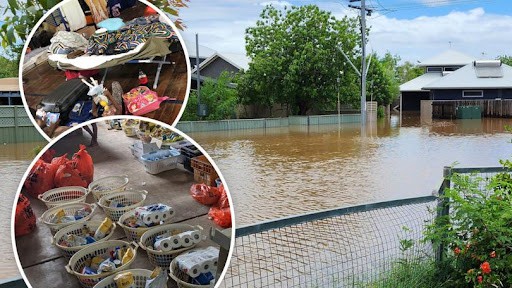
Tropical Cyclone Ellie’s remnants caused days of violent wind and rain to northern Western Australia beginning on December 30, 2022. Floodplains were flooded, and numerous riverside communities were cut off as a result of the Fitzroy River swelling to record-high levels as a result of the downpour.
Australia is seeing more hazardous flooding due to heavy rainfall. The Bureau of Meteorology has issued a severe weather warning for Western Australia, and officials report that parts of the state’s north have experienced once-in-a-century flooding.
Along the rivers in the Kimberly region of Western Australia, flooding is frequent. However, the ex-tropical cyclone provided an unprecedented amount of water. Rainfall totals in the area from December 30, 2022, to the first week of January 2023 varied from 200 to 500 millimetres (7.9 to 19.7 inches).
As a result, the Fitzroy River’s flow rate increased to roughly 60,000 cubic metres per second, which is among the greatest flow rates ever recorded in any Australian river. This is significantly more than the 23,000 cubic metres per second that this river typically experiences during floods. The river’s water levels at the town of Fitzroy Crossing reached a record-breaking high of 15.81 metres on January 4, according to the Australian Bureau of Meteorology. That surpasses the previous record, set during flooding in 2002, by over two metres.
Fitzroy Crossing, Derby, Broome, and many of the area’s isolated indigenous settlements were cut off by the floodwater because so many roads and bridges were rendered inaccessible. This natural-color image was taken on January 7, 2023, by the Operational Land Imager (OLI) on Landsat 8. It shows floodwaters near Fitzroy Crossing.
Tropical Storm On December 23, 2022, Ellie made her first landfall as a category-1 storm in Australia’s Northern Territory. On December 30, it weakened into a tropical low before entering Western Australia. The former tropical cyclone had returned to the Northern Territory by January 7, 2023, and was weakening even more as it headed toward Queensland.
Following multiple major flooding incidents in eastern Australia over three straight years of La Nia conditions, there has recently been flooding in Western Australia. La Nia typically delivers the nation wetter-than-average weather. The ninth-wettest year on record in Australia was 2022.
.Fitzroy Crossing, a small hamlet of around 1,200 people in the Kimberley region of Western Australia, has requested assistance from the Australian military to help rescue its citizens.
Homes have been submerged by floodwater, and the only major road in the area has been damaged. The public has been urged to relocate to higher ground.
Authorities worry that the Fitzroy River, which flows through the town, may rise by more than 15 metres and set new height records.
The Fitzroy River was flowing at record levels on Saturday, resulting in the formation of an inland sea that was 50 km wide. Fitzroy Crossing’s bridge was harmed, the airfield was flooded, and portions of the key Great Northern Highway were closed in the Kimberley region. Additionally, 105 individuals had been evacuated from the area, and more were anticipated to be taken out in the ensuing days.
According to the state administration, the weather has now improved enough for planes to land at Fitzroy Crossing and deliver thousands of pounds of food to the locals.
The coronavirus pandemic over the previous few years resulted in a global shortage of many essential goods, especially when China closed many of its factories. In Australia, staff shortages due to COVID as well as floods and bushfires made the issue worse.
Also, check 5 Omicron COVID-19 Variant Cases In Australia; Major Concern
